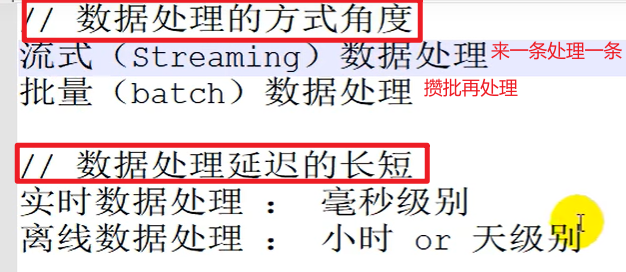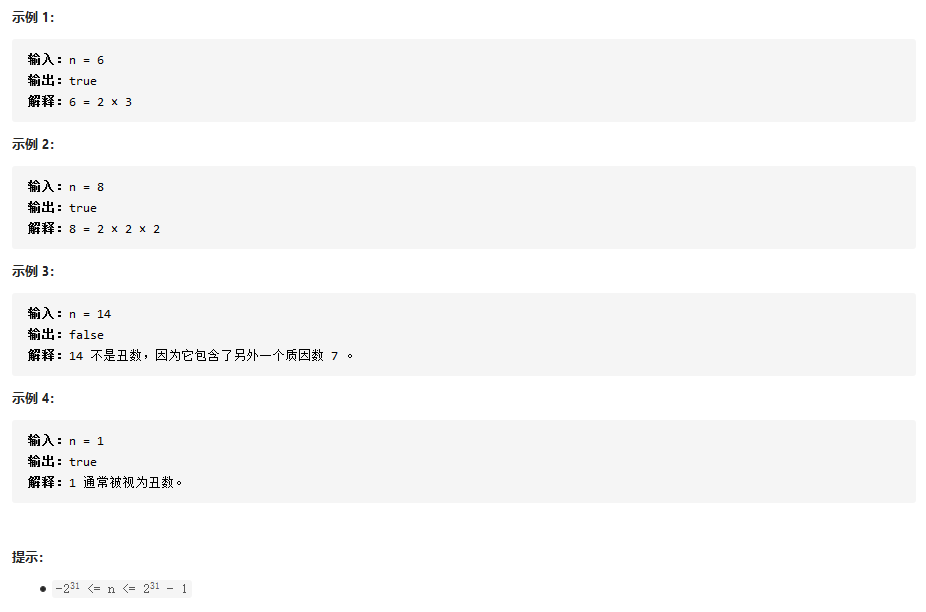java 调用 python脚本并传递参数list
项目需求:需要java调用python脚本,而且需要向脚本中传递参数,经过很长时间的摸索之后研究出了点东西,因为实在没有老师教,所以只能摸索出了最笨的方法,现在记录下来,希望大家有好的方法多多指教。
1、执行单行代码,使用Jython
<!--jython--><!-- https://mvnrepository.com/artifact/org.python/jython-standalone --><dependency><groupId>org.python</groupId><artifactId>jython-standalone</artifactId><version>2.7.1</version></dependency>/*** 执行单行代码*/@Testpublic void test1_code(){PythonInterpreter pythonInterpreter=new PythonInterpreter();pythonInterpreter.exec("print('-----执行单行代码:Hello')");}
2、执行文件脚本,有函数名不带参数,而且不引用三方库,使用Jython
hello.py:
def hello():return '----py文件执行结果:Hello'/*** 执行文件脚本,有函数名不带参数,不使用三方库*/@Testpublic void test2_file(){PythonInterpreter pythonInterpreter=new PythonInterpreter();//注意这边要用绝对路径pythonInterpreter.execfile("E:\\mlthfs\\src\\main\\resources\\pythonDemo\\hello.py");//第一个参数为期望获得的函数(变量)的名字,第二个参数为期望返回的对象类型PyFunction pyFunction=pythonInterpreter.get("hello",PyFunction.class);//调用函数,此时call无参数PyObject pyObject=pyFunction.__call__();System.out.println(pyObject);}
3、执行文件脚本,由函数名,带参数,不用三方库,Jython
testWithParam.py:
def my_test(name, age):print("name: "+name)print("age: "+age)return "success"/*** 执行文件脚本,由函数名,带参数*/@Testpublic void test3_Param(){PythonInterpreter interpreter=new PythonInterpreter();interpreter.execfile("E:\\mlthfs\\src\\main\\resources\\pythonDemo\\testWithParam.py");PyFunction pyFunction=interpreter.get("my_test",PyFunction.class);//调用函数,此时call传入两个参数PyObject pyObject=pyFunction.__call__(new PyString("tom"),new PyString("25"));System.out.println(pyObject.toString());}
4、调用脚本,使用三方库,传递参数list,脚本接收一维数组,
说明一下,python脚本中需要接收两个一维数组作为数据输入,我的思路是从java中传入list,然后再在ppython中做处理将传进去的参数转为数组,进行运算。
传参数的时候只能将所有的参数组合成一个字符串,实质是cmd命令行。
接收的时候使用sys.argv方法接收脚本外传入的参数,并且组成一个列表list,第一个元素是命令行,从第二个开始就是传入的list参数,使用print(sys.argv[1:])打印出来就是:
sys.argv[1:]== ['[3340,', '4525,', '7304,', '3335,', '5319,', '5319,', '3932,', '3932,', '4]']
现在看来格式很乱。需要根据需要处理:具体在脚本中体现,不一一赘述。
Process process = Runtime.getRuntime().exec(pythonPath + filePath + list1);public void test6_ThirdPackage_param() {String pythonPath="D:\\Program Files\\Python\\Python36\\python.exe ";String filePath="E:\\mlthfs\\src\\main\\resources\\pythonDemo\\test7.py ";//首先定义两个list,赋值。List<Integer> list1 = new ArrayList<>();List<Integer> list2 = new ArrayList<>();Integer list1Size=null;//给list1赋值list1.add(3340);list1.add(4525);list1.add(7304);list1.add(3335);//给list2赋值list2.add(5319);list2.add(5319);list2.add(3932);list2.add(3932);//得到第一个list的size,传入脚本中,方便分割参数list1Size=list1.size();System.out.println("list1-size()"+list1.size());//将list1.list2合并list1.addAll(list2);//将size加到list1最后list1.add(list1Size);try {Process process = Runtime.getRuntime().exec(pythonPath + filePath + list1);BufferedReader in=new BufferedReader(new InputStreamReader(process.getInputStream()));String line;while ((line=in.readLine())!=null){System.out.println(line);}in.close();int re=process.waitFor();System.out.println(re==1?"----状态码1----运行失败":"----状态码0----运行成功");} catch (IOException e) {e.printStackTrace();} catch (InterruptedException e) {e.printStackTrace();}}
py脚本:
import sys# 评估指标def MetricsValue(yobs,yfit):import numpy as npyyobs=np.array(yobs)yyfit=np.array(yfit)data =[yyobs, yyfit]R=np.corrcoef(data) [0,1] # 相关系数# 预报的变幅误差yo_yp=yyfit-yyobsBFWC=yo_yp/np.ptp(yyobs)V10 = np.size(np.where((abs(BFWC) <= 0.1)))/np.size(yyobs) # 非常要注意这个括号 没有括号估计内部执行顺序不对V20 = np.size(np.where((abs(BFWC) <=0.2))) / np.size(yyobs)# 确定性系数D1=np.sum(yo_yp**2)D2=np.sum((yyobs-np.mean(yyobs))**2)D=1-D1/D2#均方根误差RMSeRmse1=sum(yo_yp**2)Rmse=np.sqrt(Rmse1/np.size(yyobs))print("R",R)return R,V10,V20,D,Rmseif __name__ == '__main__':print("=============start-------------")#存放所有的参数 最后一个为第一个列表的长度(分割时用)list_str = []#存放字符型listlist1_str=[]list2_str=[]#字符型转换为int型list_int=[]list1_int=[]list2_int=[]print("len(sys.argv[1:])==",len(sys.argv[1:]))print("sys.argv[1:]==",sys.argv[1:])for i in range(1, len(sys.argv)):list_str.append(sys.argv[i].replace(",", ""))print("list_str[0]==",list_str[0])print("len(list_str)==",len(list_str))#处理第一个还有最后一个元素的格式list_str[0] = list_str[0].replace("[", "")list_str[len(sys.argv)-2] = list_str[len(sys.argv)-2].replace("]", "")print("=before===String-list===list_str",list_str)#取出最后一个数作为第一个列表的长度来分割列表list1Size=int(list_str[len(list_str)-1])print("list1Size==",list1Size)#根据size取出第一个列表list[a:b]表示取出下表为a到下标为b-1的值组成一个listlist1_str=list_str[0:list1Size]print("list1_str==",list1_str)#取出第二个列表list2_str=list_str[list1Size:len(list_str)-1]print("list2_str==",list2_str)#将str转换为intlist_int=list(map(int, list_str))list1_int=list(map(int, list1_str))list2_int=list(map(int, list2_str))print("list_int==",list_int)print("list1_int==",list1_int)print("list2_int==",list2_int)print(MetricsValue(list1_int,list2_int))print("-------------end===============")
最终控制台打印结果:
list1-size()4=============start-------------len(sys.argv[1:])== 9sys.argv[1:]== ['[3340,', '4525,', '7304,', '3335,', '5319,', '5319,', '3932,', '3932,', '4]']list_str[0]== [3340len(list_str)== 9=before===String-list===list_str ['3340', '4525', '7304', '3335', '5319', '5319', '3932', '3932', '4']list1Size== 4list1_str== ['3340', '4525', '7304', '3335']list2_str== ['5319', '5319', '3932', '3932']list_int== [3340, 4525, 7304, 3335, 5319, 5319, 3932, 3932, 4]list1_int== [3340, 4525, 7304, 3335]list2_int== [5319, 5319, 3932, 3932]R -0.4279893568893351(-0.4279893568893351, 0.0, 0.25, -0.5495247640483161, 2017.0318539874377)-------------end===============----状态码0----运行成功
5、调用脚本,使用三方库,传递参数list,脚本接收二维数组
这一种跟上一步的过程类似,不同点就是脚本需要的参数是二维数组,直接上代码
/*** 接收二维数组**/@Testpublic void test7_ThirdPackage_param() {String pythonPath="D:\\Program Files\\Python\\Python36\\python.exe ";String filePath="E:\\mlthfs\\src\\main\\resources\\pythonDemo\\test8.py ";Integer x_count=null;//因子个数Integer year_count=null;//年数List<Integer> newList=new ArrayList<>();List<Integer> list1=new ArrayList<>();list1.add(328);list1.add(941);list1.add(385);list1.add(4327);x_count=list1.size();year_count=4;//假设为4年List<Integer> list2 = new ArrayList<>();//给list2赋值list2.add(388);list2.add(1529);list2.add(2063);list2.add(4108);List<Integer> list3 = new ArrayList<>();list3.add(436);list3.add(891);list3.add(1719);list3.add(4272);List<Integer> list4 = new ArrayList<>();list4.add(467);list4.add(2450);list4.add(1148);list4.add(1382);List<Integer> list5 = new ArrayList<>();list4.add(3340);list4.add(4525);list4.add(7304);list4.add(3335);System.out.println("newList0"+newList);newList.addAll(list1);System.out.println("newList1"+newList);newList.addAll(list2);System.out.println("newList2"+newList);newList.addAll(list3);newList.addAll(list4);System.out.println("newList4"+newList);newList.addAll(list5);newList.add(x_count);newList.add(year_count);System.out.println(newList);try {Process process = Runtime.getRuntime().exec(pythonPath + filePath +newList);BufferedReader in=new BufferedReader(new InputStreamReader(process.getInputStream()));String line;while ((line=in.readLine())!=null){System.out.println(line);}in.close();int re=process.waitFor();System.out.println(re==1?"----状态码1----运行失败":"----状态码0----运行成功");} catch (IOException e) {e.printStackTrace();} catch (InterruptedException e) {e.printStackTrace();}}
py脚本:
# -*- coding:utf-8 -*-import sysimport numpy as np# 评估指标def MetricsValue(yobs,yfit):import numpy as npyyobs=np.array(yobs)yyfit=np.array(yfit)data =[yyobs, yyfit]R=np.corrcoef(data) [0,1] # 相关系数# 预报的变幅误差yo_yp=yyfit-yyobsBFWC=yo_yp/np.ptp(yyobs)V10 = np.size(np.where((abs(BFWC) <= 0.1)))/np.size(yyobs) # 非常要注意这个括号 没有括号估计内部执行顺序不对V20 = np.size(np.where((abs(BFWC) <=0.2))) / np.size(yyobs)# 确定性系数D1=np.sum(yo_yp**2)D2=np.sum((yyobs-np.mean(yyobs))**2)D=1-D1/D2#均方根误差RMSeRmse1=sum(yo_yp**2)Rmse=np.sqrt(Rmse1/np.size(yyobs))print("R",R)return R,V10,V20,D,Rmse# 拟合def SVRFit (Obsx,Obsy):from sklearn.svm import SVRimport numpy as npfrom sklearn.model_selection import cross_val_predictprint("obsx",Obsx)print("obsy",Obsy)xobs=np.array(Obsx)yobs=np.array(Obsy)modelFit=SVR(kernel='rbf', C=1e3, gamma=0.1)yfit = cross_val_predict(modelFit, xobs, yobs, cv=2)# 交叉验证返回对应的拟合值,根据Obsy和yfit计算评估指标MetrValue=MetricsValue(yobs,yfit)modelFit.fit(xobs,yobs)print('MetrValue', MetrValue)print('yfit', yfit)return MetrValue, yfitif __name__ == '__main__':print("=============start-------------")# 存放所有的参数 最后一个为第一个列表的长度(分割时用)list_str = []# 存放字符型listlist1_str = []list2_str = []# 字符型转换为int型list_int = []list1_int = []list2_int = []# 存放转换出来的二维数组list1_int2 = []print("len(sys.argv[1:])==", len(sys.argv[1:]))print("sys.argv[1:]==", sys.argv[1:])for i in range(1, len(sys.argv)):list_str.append(sys.argv[i].replace(",", ""))print("list_str[0]==", list_str[0])print("len(list_str)==", len(list_str))# 处理第一个还有最后一个元素的格式list_str[0] = list_str[0].replace("[", "")list_str[len(sys.argv) - 2] = list_str[len(sys.argv) - 2].replace("]", "")print("=before===String-list===list_str", list_str)# 年数(行数)year_count = int(list_str[len(list_str) - 1])# 因子个数(列数)x_count = int(list_str[len(list_str) - 2])print("year_count=行数=", year_count)print("x_count=列数=", x_count)# 第一个数组list1_str = list_str[0:int(year_count * x_count)]print("list1", list1_str)list1_int = list(map(int, list1_str))print("list1_int", list1_int)# 使用numpy库的函数将一维数组转换为二维list1_int2 = np.array(list1_int).reshape((year_count, x_count))print("list1_int2", list1_int2)# 第二个数组list2_str = list_str[int(year_count * x_count):len(list_str) - 2]print("list2_str", list2_str)list2_int = list(map(int, list2_str))print("list2_int", list2_int)print("-------------result:===============")print("list1_int2", list1_int2)print("list2_int", list2_int)print(SVRFit(list1_int2,list2_int))print("-------------end===============")
运行结果:
=============start-------------len(sys.argv[1:])== 22sys.argv[1:]== ['[328,', '941,', '385,', '4327,', '388,', '1529,', '2063,', '4108,', '436,', '891,', '1719,', '4272,', '467,', '2450,', '1148,', '1382,', '3340,', '4525,', '7304,', '3335,', '4,', '4]']list_str[0]== [328len(list_str)== 22=before===String-list===list_str ['328', '941', '385', '4327', '388', '1529', '2063', '4108', '436', '891', '1719', '4272', '467', '2450', '1148', '1382', '3340', '4525', '7304', '3335', '4', '4']year_count=����= 4x_count=����= 4list1 ['328', '941', '385', '4327', '388', '1529', '2063', '4108', '436', '891', '1719', '4272', '467', '2450', '1148', '1382']list1_int [328, 941, 385, 4327, 388, 1529, 2063, 4108, 436, 891, 1719, 4272, 467, 2450, 1148, 1382]list1_int2 [[ 328 941 385 4327][ 388 1529 2063 4108][ 436 891 1719 4272][ 467 2450 1148 1382]]list2_str ['3340', '4525', '7304', '3335']list2_int [3340, 4525, 7304, 3335]-------------result:===============list1_int2 [[ 328 941 385 4327][ 388 1529 2063 4108][ 436 891 1719 4272][ 467 2450 1148 1382]]list2_int [3340, 4525, 7304, 3335]obsx [[ 328 941 385 4327][ 388 1529 2063 4108][ 436 891 1719 4272][ 467 2450 1148 1382]]obsy [3340, 4525, 7304, 3335]R -0.4279893568893351MetrValue (-0.4279893568893351, 0.0, 0.25, -0.54952466883164, 2017.0317920151879)yfit [5319.5 5319.5 3932.5 3932.5]((-0.4279893568893351, 0.0, 0.25, -0.54952466883164, 2017.0317920151879), array([5319.5, 5319.5, 3932.5, 3932.5]))-------------end===============----状态码0----运行成功



































还没有评论,来说两句吧...